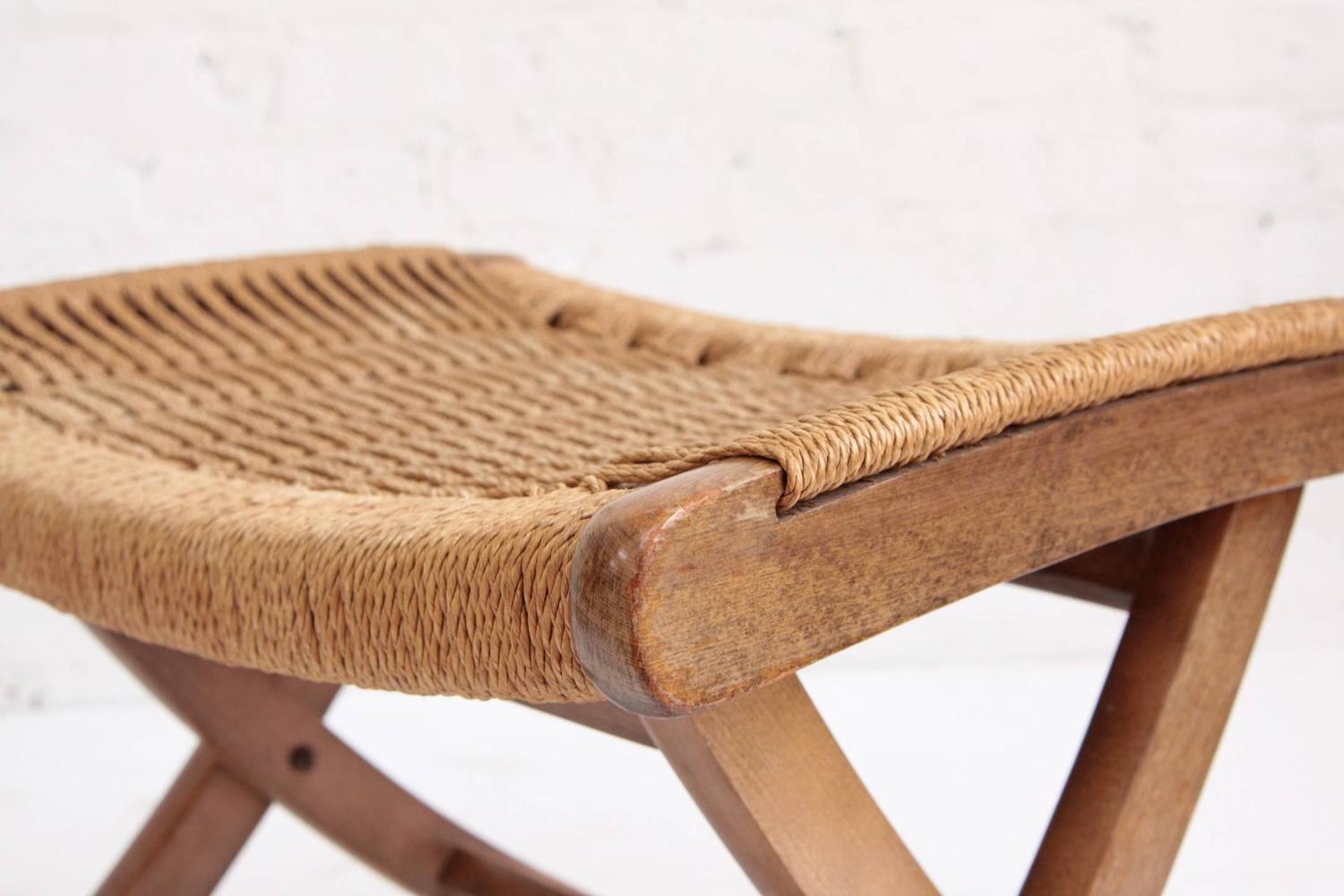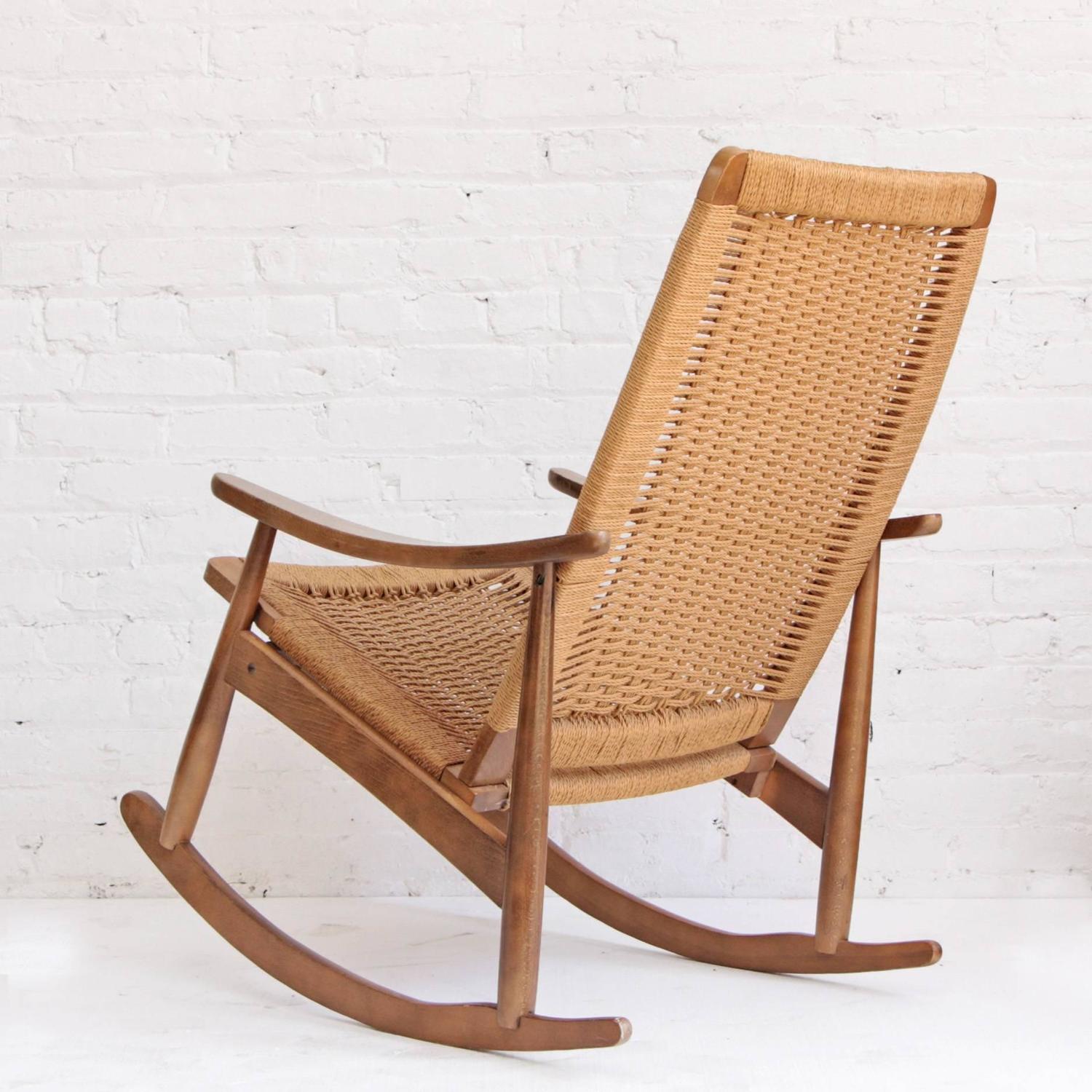The History and Origin of Woven Rope Rocking Chairs

The woven rope rocking chair, a timeless piece of furniture, boasts a rich history spanning centuries and continents. Its origins can be traced back to various cultures, each contributing to the evolution of its design and construction.
Early Origins and Cultural Significance
The concept of rocking chairs, in general, predates the specific form of the woven rope rocking chair. Early examples of rocking chairs can be found in ancient civilizations like Egypt and China, where they were used as ceremonial seats or for relaxation. However, the woven rope rocking chair as we know it today is believed to have emerged in the 18th century in North America.
The early woven rope rocking chairs were often handcrafted by skilled artisans using readily available materials. The rope, typically made from hemp or flax, was woven into a sturdy and flexible seat, providing both comfort and durability. These chairs were often used in rural communities and were a symbol of craftsmanship and self-sufficiency.
Evolution of Materials and Techniques
Over time, the materials and techniques used in the construction of woven rope rocking chairs have evolved. In the 19th century, the use of metal components, such as the rockers, became more common. This allowed for greater stability and durability, and the rocking chairs became more widely accessible.
The use of different types of rope, including cotton and synthetic fibers, also expanded the range of styles and designs. The development of weaving techniques, such as the “whip stitch,” enabled artisans to create more intricate patterns and textures.
Notable Examples of Woven Rope Rocking Chairs
Throughout history, there have been several notable examples of woven rope rocking chairs that have left a lasting impression. One such example is the “Wicker Rocking Chair” designed by the renowned American architect Frank Lloyd Wright. This chair, characterized by its simple yet elegant design, exemplifies the integration of form and function.
Another notable example is the “Rope Chair” designed by the Danish architect Arne Jacobsen. This chair, with its iconic woven rope seat and minimalist design, has become a classic of modern furniture design.
The Enduring Appeal of Woven Rope Rocking Chairs
The woven rope rocking chair continues to be a popular choice for both its aesthetic appeal and its comfort. The natural materials and the handcrafted nature of these chairs create a sense of warmth and authenticity. Their gentle rocking motion provides a soothing and relaxing experience, making them perfect for enjoying a quiet moment or a leisurely conversation.
Crafting a Woven Rope Rocking Chair

Crafting a woven rope rocking chair is a labor of love that involves meticulous attention to detail and a deep understanding of the materials and techniques involved. From selecting the right rope to weaving intricate patterns, each step plays a crucial role in creating a sturdy and aesthetically pleasing piece of furniture.
Materials and Tools
The materials and tools needed for crafting a woven rope rocking chair include:
- Rope: The choice of rope is paramount, as it dictates the strength, durability, and aesthetic appeal of the chair. Natural fibers like manila hemp, sisal, or cotton are popular choices for their strength and natural beauty. Synthetic ropes, such as polypropylene or nylon, offer durability and resistance to water and UV damage.
- Frame: The frame serves as the foundation of the chair and can be made from various materials like wood, metal, or even recycled materials. The design and dimensions of the frame will determine the overall shape and size of the chair.
- Tools: A range of tools is required for crafting the chair, including a saw, drill, screwdriver, clamps, and a variety of rope-working tools like a rope knife, marlinspike, and a fid.
Weaving Techniques
Weaving the rope onto the frame is the heart of crafting a woven rope rocking chair. Various techniques are employed to create intricate patterns and ensure the chair’s stability.
- Coiling: This technique involves wrapping the rope around itself in a continuous spiral, creating a sturdy and flexible structure. Coiling is often used for the seat and backrest of the chair.
- Knotting: Knotting techniques are used to create strong connections between different parts of the rope structure. Common knots used in woven rope rocking chairs include the square knot, clove hitch, and figure-eight knot.
- Braiding: Braiding involves intertwining three or more strands of rope to create a strong and aesthetically pleasing structure. Braiding is often used for the arms and legs of the chair.
Step-by-Step Construction
Constructing a woven rope rocking chair involves a series of steps, each requiring precision and patience.
- Frame Preparation: The first step involves preparing the frame by cutting, drilling, and assembling the wooden or metal components.
- Rope Preparation: Before weaving, the rope needs to be cut to the required lengths and treated with a sealant to protect it from moisture and UV damage.
- Weaving the Seat: The seat is typically woven using the coiling technique, with the rope being wrapped around itself in a continuous spiral. The tension of the rope is crucial for ensuring the seat’s comfort and durability.
- Weaving the Backrest: Similar to the seat, the backrest is woven using the coiling technique, with the rope being wrapped around itself in a continuous spiral. The height and shape of the backrest can be adjusted to provide optimal comfort.
- Weaving the Arms: The arms are typically woven using the braiding technique, with three or more strands of rope being intertwined to create a strong and aesthetically pleasing structure.
- Weaving the Legs: The legs are also woven using the braiding technique, with the rope being intertwined to create a sturdy and stable base for the chair.
- Finishing Touches: Once the weaving is complete, the chair is given a final polish with a sealant to protect it from moisture and UV damage.
Types and Styles of Woven Rope Rocking Chairs

Woven rope rocking chairs come in a variety of styles, each offering unique aesthetics and functionality. Understanding the different types and styles can help you choose the perfect chair for your needs and preferences.
Traditional Woven Rope Rocking Chairs
Traditional woven rope rocking chairs are characterized by their classic design, often featuring a simple, curved frame and a comfortable, gently sloping seat. These chairs are typically made from natural materials such as wood and rope, and they often have a rustic, handcrafted look.
- Classic Adirondack Rocking Chair: This iconic style is known for its wide, comfortable seat and high back, offering excellent support. The traditional Adirondack rocking chair is often made from cedar or redwood and features a natural, unfinished look.
- Colonial Rocking Chair: These chairs are inspired by colonial-era designs, featuring a more elaborate, ornate frame with intricate carvings. They often have a slightly higher back than Adirondack chairs and are often made from hardwoods such as oak or cherry.
- Mission Style Rocking Chair: This style is characterized by its clean lines and simple, functional design. Mission-style rocking chairs are often made from oak or other hardwoods and feature a dark stain or natural finish.
Modern Woven Rope Rocking Chairs
Modern woven rope rocking chairs embrace contemporary design elements, incorporating sleek lines, geometric shapes, and innovative materials. These chairs often feature a more minimalist aesthetic and are designed to complement modern interiors.
- Scandinavian Rocking Chair: These chairs are inspired by Scandinavian design principles, featuring simple, clean lines, and a focus on functionality. They often have a low profile and a wide, comfortable seat.
- Mid-Century Modern Rocking Chair: These chairs are inspired by the mid-20th century design movement, featuring a focus on organic shapes and bold colors. They often have a distinctive, curved frame and a comfortable, contoured seat.
- Industrial Rocking Chair: These chairs often feature a combination of metal and wood, with a raw, industrial aesthetic. They are often designed with a minimalist look and feature a sturdy, durable frame.
Minimalist Woven Rope Rocking Chairs
Minimalist woven rope rocking chairs prioritize simplicity and functionality, featuring clean lines, uncluttered designs, and a focus on the natural beauty of materials. These chairs are designed to blend seamlessly into any setting, adding a touch of elegance and sophistication.
- Japanese Rocking Chair: Inspired by Japanese aesthetics, these chairs often feature a simple, elegant design with a low profile and a wide, comfortable seat. They are often made from natural materials such as bamboo or wood.
- Contemporary Rocking Chair: These chairs often feature a modern, minimalist design with clean lines and a focus on functionality. They are often made from a combination of natural and synthetic materials.
- Outdoor Rocking Chair: These chairs are designed for outdoor use and often feature a weather-resistant frame and a comfortable, breathable seat. They are often made from durable materials such as teak or aluminum.
Woven Rope Rocking Chairs from Different Cultures and Regions
Woven rope rocking chairs have a rich history and have been crafted in various cultures and regions around the world. These chairs often reflect the unique traditions, materials, and aesthetics of their origin.
- South American Rocking Chairs: These chairs often feature intricate woven patterns and vibrant colors, reflecting the rich cultural heritage of South America. They are often made from natural materials such as bamboo or rattan.
- African Rocking Chairs: These chairs often feature a distinctive, curved frame and a comfortable, contoured seat. They are often made from hardwoods such as mahogany or ebony.
- Asian Rocking Chairs: These chairs often feature a simple, elegant design and are often made from natural materials such as bamboo or rattan. They are often designed for relaxation and meditation.
The gentle sway of a woven rope rocking chair can be incredibly soothing, inviting you to unwind and reflect. This kind of chair often evokes a sense of rustic charm, reminding us of simpler times. If you’re seeking a more modern, yet still comfortable rocking experience, you might consider the ercol hamble rocking chair , a beautiful example of Scandinavian design.
Regardless of your preference, finding the right rocking chair can be a significant step towards creating a space that nurtures your well-being.
The gentle sway of a woven rope rocking chair can be a comforting reminder of simpler times, much like the nostalgic feeling of playing classic video games. If your gaming chair needs a little TLC, you might find yourself looking for x rocker gaming chair parts to bring it back to its former glory.
Just like a well-maintained rocking chair, a comfortable gaming setup can be a source of relaxation and enjoyment, allowing you to escape into your own personal world.
